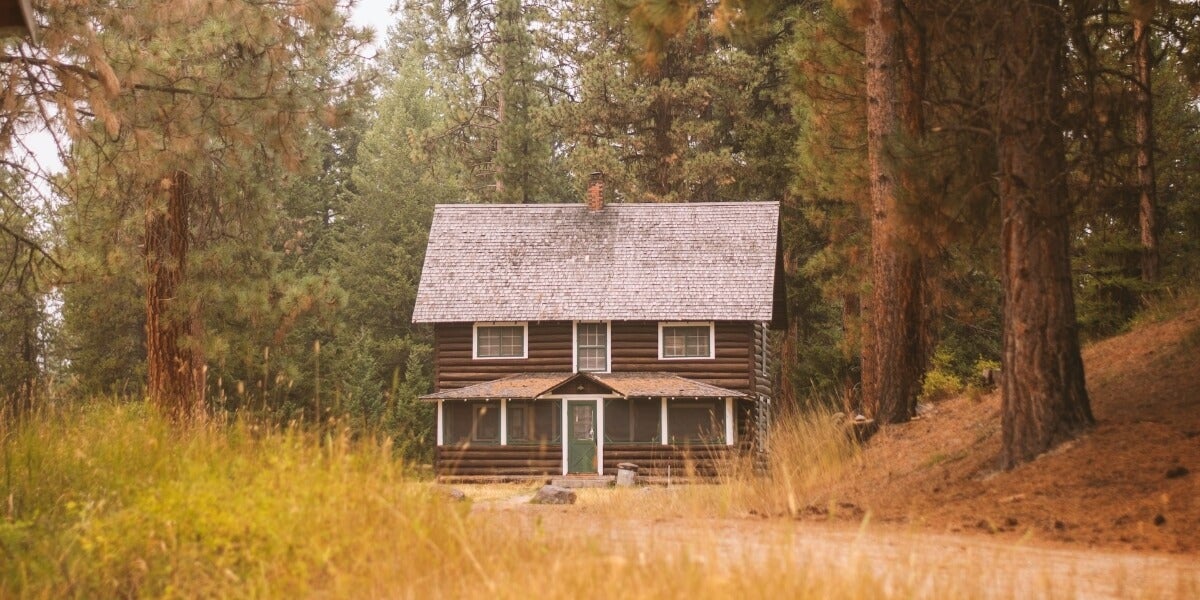As a homesteader, you’ve likely learned how to become self-sufficient — home improvement means DIY (Do It Yourself). However, not all tasks are safe or legal to do alone. You may believe you have sufficient knowledge and the correct skills, but some renovations and installations are highly technical and can become dangerous if done incorrectly. It’s time to study the warning labels on tools and note activities that could endanger you and your family. After all, your homesteading dream is about living on your terms, not being injured or possibly killed when you should have gotten a professional’s help. Here are a few homestead tasks unsuitable for DIY’ing and why you need assistance.
1. Homestead Tasks – Digging an Underground Bunker
Building your own underground bunker may seem like a fabulous idea to prepare for danger and an uncertain future, but the risks make this a project best left to civil engineering professionals.
Incorrect building and excavation techniques may make this project a real hazard to you and your family. Without correct shoring of the structure using beams and weight-bearing roofing, the bunker could collapse, claiming lives and destroying property.
Just like a well may require official licensing, you could need the approval of local water-board officials to ensure the bunker’s placement doesn’t interfere with the surrounding water tables. Excess groundwater can weaken the structure and cause it to fail.
A trained contractor also has the correct equipment to safely and effectively perform the task. Additionally, building a bunker requires soil knowledge to ensure it can bear the weight of concrete, and rocky soil can damage equipment, significantly increasing the project’s cost.
Find help: Search Craigslist or community groups for recommended excavation contractors. To dig beyond specific limits, they may need to be bonded and registered with the local government or state authorities.
2. Homestead Tasks – Installing Electrical Wiring and Panel Work
Wiring a house or an outside building like a shed can become dangerous without the proper knowledge and equipment. Poor wiring practices present electrocution and fire risks. Most states require a permit and inspections by various authorities before approving a wiring project. Safety should come first, and it’s not worth the risk of a house fire or severe property damage.
Find help: Discuss your project with the local electrical supplier. They will likely recommend a trained, bonded and licensed electrician who can do wiring in your area. Professionals use tools that identify overheating wiring and make safe alterations.

3. Homestead Tasks – Piping Gas
Any work on gas lines or gas piping is the terrain of a gas fitter who knows the properties of various materials and the best methods to ensure a safe installation. When you lack the appropriate certification, you won’t know about leak prevention methods, explosions and carbon monoxide poisoning.
Incorrectly installed gas pipes and stoves can cause childhood asthma and other health risks, so it’s worth doing it according to regulations.
Find help: Local suppliers and equipment retailers may recommend a registered and licensed gas fitter to help you safely make the necessary modifications for cooking.
4. Homestead Tasks – Digging a Septic System
When you live off the grid, you likely don’t use municipal services for human waste disposal, as drain lines may not reach your property. Digging a septic system may seem like a great idea, but you could be in the crud if you don’t follow local ordinances and regulations.
A regulated and approved septic tank with the appropriate chemicals to neutralize organic materials may be safer. If you want to do it “like the olden days,” you must consult a qualified septic contractor. You’ll require an operation permit to dispose of biowaste, and the system is subject to frequent inspection. Underground septic systems may pollute groundwater and, if poorly built, can collapse.
Find help: A stop at your local council may provide the requirements for a natural septic system and connect you with the professionals trained for this line of work. You can also contact well-drilling contractors, who often work in the septic business.
5. Homestead Tasks – Removing a Large Tree
When you start your prewinter yard cleanup, you may decide to remove old trees that obstruct your security and that you fear could topple under heavy snow. While this is a responsible idea, large trees and those near structures require professional attention.
Grabbing your chainsaw may not be the best idea if you don’t have loads of experience. Aside from the technical knowledge required to fell a tree safely, you may face other challenges like buried bullets from target practice or fliers expelled during hunting in the area before you moved in. Embedded ordinances may still have firepower and create a dangerous kickback when your chainsaw connects with them in the tree.
Find help: Reach out to the local parks services for advice on whether you may cut down a tree. Certain kinds are protected, and you could face a fine for chopping down a protected species if it’s not on private land. Skilled rangers may help you remove a dangerous tree.
Safety First
DIY skills are essential for homesteading, but knowing your limits is equally important and will keep you safe and out of trouble. Some projects carry serious risks, from legal issues to property damage to life-threatening hazards. When safety, expertise and regulations are needed, it’s best to call a professional.
Sometimes, the best DIYing is knowing when not to do it yourself.
The post 5 Homestead Tasks You Should Reconsider Doing Yourself appeared first on AllOutdoor.com.


